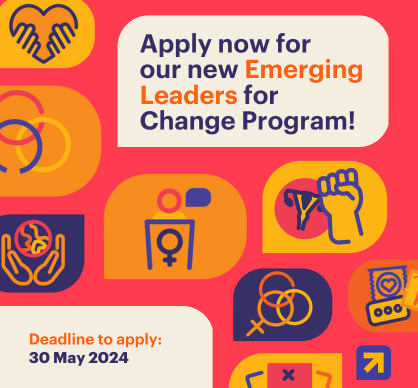 Produced by Women Deliver
May 19, 2016
Healthy Women, Healthy Economies
Produced by Women Deliver
May 19, 2016
Healthy Women, Healthy Economies
How Women’s Health and Wellbeing Can Drive Sustainable Economic Growth
Panelists from the upcoming “Healthy Women, Healthy Economies: Enhancing Women’s Economic Participation by Improving Women’s Health and Wellbeing” concurrent session at Women Deliver talk about the connection between improving women’s health and wellbeing and expanding their economic participation, and the powerful impact it can have on our global economic health and the lives of women everywhere.
Q: How can improving women’s health and wellbeing lead to sustained economic growth in developed and developing countries alike?
Susan Herbert, Executive Vice President, Global Business Development and Strategy, Merck: Changing workforce demographics have made sustained economic growth a challenge across the globe. One solution that is often overlooked is greater participation in the workforce by women; in fact, the International Labour Organization estimates that 865 million women in the world have the potential to contribute more fully to their economies. This is especially prevalent in the Asia-Pacific region, which loses about $89 billion a year in unrealized output because women are not adequately integrated into the economy. Overall, McKinsey Global estimates that $28 trillion - trillion! - could be added to the annual global GDP if women participated in the workforce at the same level as men.
But the truth is - they don’t, and their health and well-being is often one barrier to full economic participation. For example, we know that women globally women disproportionately carry the burden of unpaid work. This often means that women opt for part time work or informal sector work, which puts them at a disadvantage vis-à-vis pay and other benefits. We also know that the ‘double burden’ has negative health and well-being impacts for women. To allow women to reach their full potential in the workforce - and spur economic growth - we need to break down these barriers and understand the relationship between labor force participation and health. That’s what Healthy Women, Healthy Economies is working to address.
Catherine Russell, U.S. Ambassador-at-Large for Global Women’s Issues: I would add that the $28 trillion Susan mentioned represents a 26 percent increase in the world’s GDP. Issues like health and safety stand in the way of that kind of progress, holding back women, their families, and economies. If we can help women live healthy lives that are free from violence, we can help them participate in and contribute to the economy, and that’s good for everyone.
Leslie Mancuso, President & CEO, Jhpiego: I couldn’t agree more. Health and access to health care services is a major gateway to advancing economic opportunities for women. When women have adequate resources to care for themselves and their families, they unlock a world of potential for themselves, their communities and their nations.

Q: How do we go about tackling such a complex issue?
SH: This can’t be left to just one segment of society. We need the government, the private sector, and civil society to work together to address challenges to women’s health and wellbeing. As the private sector partner of Healthy Women, Healthy Economies, Merck worked with the U.S. and Philippine governments to identify policies and programs that advance women’s health and well-being allowing them to participate more fully in the economy. This culminated in the launch of the Policy Toolkit in September of 2015 that gives governments and companies’ best practices to bring these opportunities to life.
CR: Healthy Women, Healthy Economies is a great example of how we can make sure that women’s health and empowerment is not a standalone effort. It brings together different ministries within governments—health, labor, and women’s issues, for example—and shows the clear role for the private sector. This is critical, because, more and more, we see that challenges facing women and girls require a comprehensive approach, one that includes governments, the private sector, and civil society.
LM: Improving women’s health and increasing economic participation is a complex and resource intensive issue that a single stakeholder is unlikely to be able to tackle alone. Partnership, especially between public and private stakeholders, to develop client-centered, and woman-centered programs is critical.
Q: Why is this important?
SH: Aside from the obvious economic impact data, the United Nations (UN) includes targets for both women’s health and empowerment in its Sustainable Development Goals. What we’re trying to do is draw the connection between two of the goals, health and gender empowerment, to show that these factors work in concert to drive sustained and inclusive economic and social development. Let us not forget, healthy women lead to healthy economies but also healthy societies. Men benefit as well when their partners are economically empowered and men can take advantage of offerings such as a parental leave policy. What’s more, the UN also emphasizes partnerships, which is exactly where programs like these thrive: at the intersection between government, the private sector, and civil society.
CR: From the United States’ perspective, we care about these issues for two reasons. First, because we believe that women deserve the same rights and opportunities as men, and health is a critical part of that. Second, because we know that when women do better, countries and economies do better as well. Our global goals for peace, prosperity, and security will not be met if women are left behind.
LM: The reason this is important is quite simple: because when women move forward, the world moves forward with them.
For more on Healthy Women, Healthy Economies, visit: http://healthywomen.apec.org/
Photo courtesy of: Stephan Bachenheimer/ World Bank


